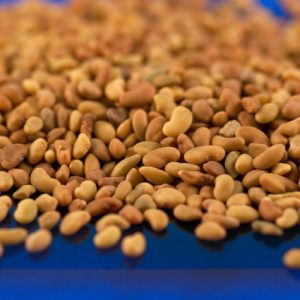Description
Instructions for planting, growing and harvesting
A – Soil:
Spinach grows in most types of soil. If the soil pH is less than 6, the growth condition is in appropriate and in addition to low germination, it causes yellowing and very dark browning of the first leaves and seedlings, and browning of roots; and if the acidity is very high, very dark browning of all leaves will occur.
It should be noted that lime is used to correct acidity. Spinach is sensitive to boron deficiency and if soil is boron deficient, the roots are blackened and the leaves are yellowed, and the plant lies flat on the ground and its grows is mainly slowly.
B – Fertilizer consumption:
Spinach needs a high level of soil fertility. The amount of crop production depends on soil nutrients. The use of livestock manure is recommended for lands that are poor in nutrients. Fresh manure should not be used on spinach farms at all as it is sensitive to some of the fungi that cause root rot. To produce a healthy crop and taking the soil test into account, addition of 250 kg of urea, and 50 kg of phosphorus (P2O5) per hectare is recommended. The best way to use fertilizers is in strips of 5 – 5.7 cm below the seed planting site and 15 cm next to the ridge. Of the Nitrogen fertilizers, 1/4 are applied before planting and the rest (3/4) as road. If seed is to be produced, the first road fertilizer is added to the ground before flowering (male plants) and the second road after flowering (male plants).
C – Cultivation methods:
Spinach is cultivated in ridges or ditches of ridges. The most desirable method is cultivation on both sides of the ridge with a width of 60 cm and seed planting depth of 1 – 1.5 cm. To produce spinach with large leaves, the density is reduced and with small leaves, the density is increased. The amount of seed required per hectare in loamy soils with good drainage of 20 kg in well-prepared lands is reduced. In proper rotation, it should be noted that spinach groups were rotated every three years.
D – Irrigation:
Extra watering turns the color of plant leaves yellow, and shortage of water slows the plant growth and accelerates its flowering. If the purpose of cultivation is to produce seeds, irrigation is very important at the time of flowering, and if the weather warms up, in addition to increased need of irrigation, the leaves will somewhat turn yellow.
E. Diseases and pests:
One of the most important diseases of spinach, especially in humid areas, is internal powdery mildew. The upper surface of the leaves turns yellow and on the underside surface gray mold appears. Cucumber mosaic virus transmitted by aphids, causes the inner leaves to become streaked and mosaic and then yellow, and eventually leads to plant death. For the virus, the use of resistant cultivars and transmission agent control is recommended. One of the important pests of spinach is aphids. And to control aphids, malathion can be used. Spinach does not compete with weeds, and hence controlling diseases is vitally important early in the growing season.
F. Harvest:
Each spinach plant has seven leaves ripping to be harvested, which can be performed in two ways:
a) Harvest of the last leaf from the bottom (soil surface)- one picking is possible.
b) Harvesting from two centimeters above soil surface – several pickings is possible.
In general, harvesting should be performed in prior to flowering stem formation. If the flowering stem appears, the leaves become rough and stiff, its quality is severely reduced, and they taste bitter.
G. Date of planting:
The most desirable planting date in Varamin region and similar areas, from about the third week of September to the second week of October, in the northern parts of the country, from the September 20th to October 20th, and in Khuzestan region, from October 20th to November 20th.



